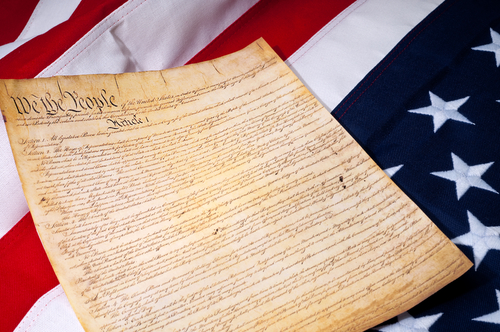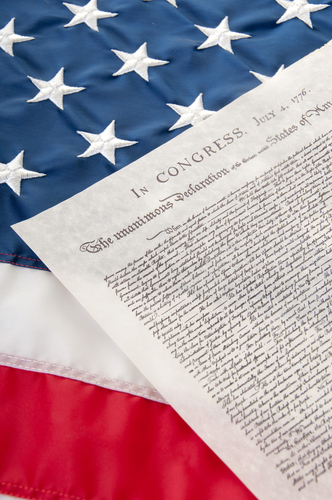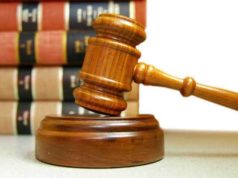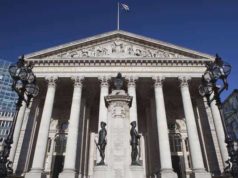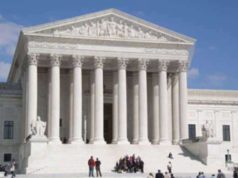Table of Contents
- 1 What is the 1st Amendment?
- 1.1 Freedom of Speech
- 1.2 Freedom of Religion
- 1.3 Freedom of Press
- 1.4 Freedom of Assembly
- 1.5 Right to Petition the Government
- 1.6 Influence on the United States
- 1.7 Conclusion
- 1.8 What is the First Amendment?
- 1.9 The First Amendment Defined:
- 1.10 Stipulations of the 1st Amendment:
- 1.11 How the First Amendment was created:
- 1.12 Court Cases tied into the 1st Amendment
- 1.13 1st Amendment: Freedom of Speech
- 1.14 State Timeline for Ratification of the Bill of Rights
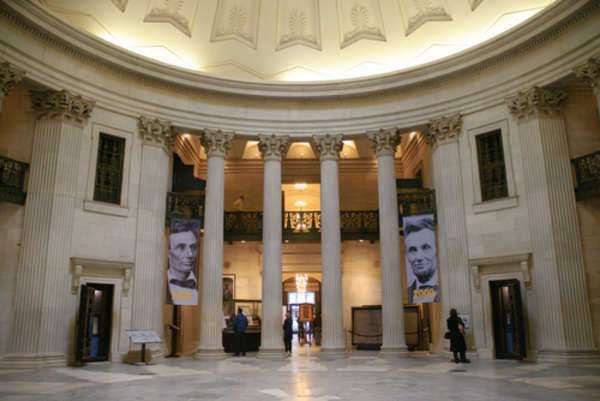
What is the 1st Amendment?
The First Amendment to the United States Constitution is one of the most important, and arguably one of the most famous, of all constitutional amendments. This amendment guarantees several fundamental rights, including the right to free speech, freedom of religion, freedom of the press, freedom of assembly and the right to petition the government for redress of grievances. These five basic freedoms are vital to the preservation of democracy and have had an enormous impact on the development of the United States over the past two centuries.
The First Amendment was adopted in 1791, as part of the Bill of Rights. These ten amendments to the Constitution were added to protect the individual rights of citizens from potential abuses by the federal government. The First Amendment, in particular, was seen as essential in protecting the freedom of individuals and ensuring a democratic society where ideas could be freely expressed without fear of government censorship.
Freedom of Speech
One of the most important aspects of the First Amendment is the guarantee of freedom of speech. This fundamental right is essential to the functioning of democratic societies, as it allows individuals to voice their opinions openly and freely without fear of retribution. This right has been integral to the development of the United States, as it has allowed for the free exchange of ideas, and has given rise to some of the most important intellectual and artistic movements in American history.
Freedom of Religion
The freedom of religion, also enshrined in the First Amendment, is another essential right that has had a profound impact on the development of the United States. This principle has allowed for a wide variety of religious beliefs to flourish in the United States, and has prevented the government from establishing any one religion as the official religion of the state. This has ensured that all citizens are free to practice their own religion without fear of persecution, and has enabled the United States to become one of the most religiously diverse countries in the world.
Freedom of Press
The freedom of the press is also a fundamental right enshrined in the First Amendment. This right has ensured that the press is free to report on and criticize the government, without fear of government censorship. This has allowed for the press to serve as a watchdog over the activities of government officials and has helped to keep government officials accountable to the people they serve.
Freedom of Assembly
The freedom of assembly, another essential right outlined in the First Amendment, has allowed for individuals to peacefully gather and protest for their rights. This has been instrumental in advancing the civil rights movement, and has enabled individuals to voice their dissent in a peaceful and lawful manner.
Right to Petition the Government
Finally, the right to petition the government for redress of grievances is a crucial right that has allowed for individuals and groups to bring their grievances before the government in an effort to effect change. This right has been essential in advancing social justice movements, and has helped to ensure that minorities and other marginalized groups are not ignored by the government.
Influence on the United States
In addition to ensuring the protection of individuals’ rights, the First Amendment has also been instrumental in shaping the political and cultural landscape of the United States. This amendment has encouraged the robust exchange of ideas that has allowed for the development of innovative and diverse cultural movements, and has enabled the United States to become a global leader in science, technology, and the arts.
One of the most significant ways that the First Amendment has influenced the United States is through the American Civil Rights Movement. The right to free speech, assembly, and petition have been essential in the fight against racial discrimination and segregation. Leaders such as Martin Luther King Jr. utilized these rights to bring attention to the injustices faced by African Americans, and to advocate for political and social change. This movement helped to bring about an end to legal segregation and helped to pave the way for greater civil rights for all Americans.
Furthermore, the First Amendment has allowed for new and innovative ideas to flourish, even those that challenge the status quo. This has helped to drive social and cultural progress and has ushered in major shifts in social attitudes and beliefs. For example, the freedom of speech has allowed for the development of new and challenging artistic movements. The freedom of the press has allowed for investigative journalism to uncover corruption and malfeasance by government officials. The freedom of assembly has enabled countercultural movements to assemble and voice their dissent in the streets. And finally, the right to petition the government has made it possible for grassroots movements to bring about legal changes.
Conclusion
However, the First Amendment also poses certain challenges for American society. The guarantee of free speech has resulted in difficult questions surrounding hate speech and political extremism. In recent years, the rise of populist movements has increased the prevalence of speech that many find harmful and offensive. These challenges have only heightened calls for greater regulation of speech, leading to debates over the limits of free speech in a democratic society.
In conclusion, the First Amendment has had a profound impact on the development of the United States. The guarantee of freedom of speech, religion, the press, assembly, and the right to petition the government has been essential in the advancement of civil rights, social justice movements, and cultural progress. While the First Amendment poses certain challenges for society, it remains a vital cornerstone of American democracy, and a testament to the enduring power of free and open expression in American society.
First Amendment: Religion and Expression
What is the First Amendment?
Congress shall make no law respecting an establishment of religion, or prohibiting the free exercise thereof; or abridging the freedom of speech, or of the press, or the right of the people peaceably to assemble, and to petition the Government for a redress of grievances.
The First Amendment Defined:
The First Amendment is a part of the Bill of Rights, which are the first 10 Amendments to the United States Constitution and the framework to elucidate upon the freedoms of the individual. The Bill of Rights was proposed and sent to the states by the first session of the First Congress. They were later ratified on December 15, 1791.
The first 10 Amendments to the United States Constitution were introduced by James Madison as a series of legislative articles and came into effect as Constitutional Amendments following the process of ratification by three-fourths of the States on December 15, 1791.
Stipulations of the 1st Amendment:
The First Amendment to the United States Constitution prohibits the passing or creation of any law that establishes a religious body and directly impedes an individual’s right to practice whichever religion they see fit.
The First Amendment to the United States Constitution is a part of the Bill of Rights and the amendment which disables an entity or individual from practicing or enforcing a religious viewpoint which infringes on the freedom of speech, the right peaceable assemble, the freedom of the press, or which prohibits the petitioning for a governmental evaluation of grievances.
In its infancy, the First Amendment only applied to laws enacted by Congress; however, the following Gitlow v. New York, the Supreme Court developed that the Due Process Clause attached to the Fourteenth Amendment applies the fundamental aspects of the First Amendment to each individual state, including all local governments within those states.
The Establishment clause of the First Amendment is the primary pronouncement in the Amendment, stating that Congress cannot institute a law to establish a national religion for the preference of the U.S. government states that one religion does not favor another. As a result, the Establishment Clause effectively created a wall of separation between the church and state.
How the First Amendment was created:
When the original constitution was created there was significant opposition due to the lack of adequate guarantees for civil freedoms. To offer such liberties, the First Amendment (in addition to the rest of the Bill of Rights) was offered to the states for ratification on September 25, 1789, and later adopted on December 15, 1791.
Court Cases tied into the 1st Amendment
In Sherbert v. Verner, the Supreme Court applied the strict scrutiny standard of review to the Establishment Clause, ruling that a state must demonstrate an overwhelming interest in restricting religious activities.
In Employment Division v Smith, the Supreme Court went away from this standard by permitting governmental actions that were neutral regarding religious choices.
Debs v. the United States on June 16, 1919, tested the limits of free speech in regards to the “clear and present danger” test.
1st Amendment: Freedom of Speech
Freedom of speech in the United States is protected by the First Amendment and is re-established in the majority of state and federal laws. This particular clause typically protects an individual’s right to partake in even distasteful rhetoric, such as racist or sexist comments and distasteful remarks towards the public policy.
Speech directed towards some subjects; however, such as child pornography or speech that incites an imminent threat, as well as commercial forms of speech are regulated.
State Timeline for Ratification of the Bill of Rights
New Jersey: November 20, 1789; rejected article II
Maryland: December 19, 1789; approved all
North Carolina: December 22, 1789; approved all
South Carolina: January 19, 1790; approved all
New Hampshire: January 25, 1790; rejected article II
Delaware: January 28, 1790; rejected article I
New York: February 27, 1790; rejected article II
Pennsylvania: March 10, 1790; rejected article II
Rhode Island: June 7, 1790; rejected article II
Vermont: November 3, 1791; approved all
Virginia: December 15, 1791; approved all
Georgia, Massachusetts, and Connecticut did not ratify the first 10 Amendments until 1939

